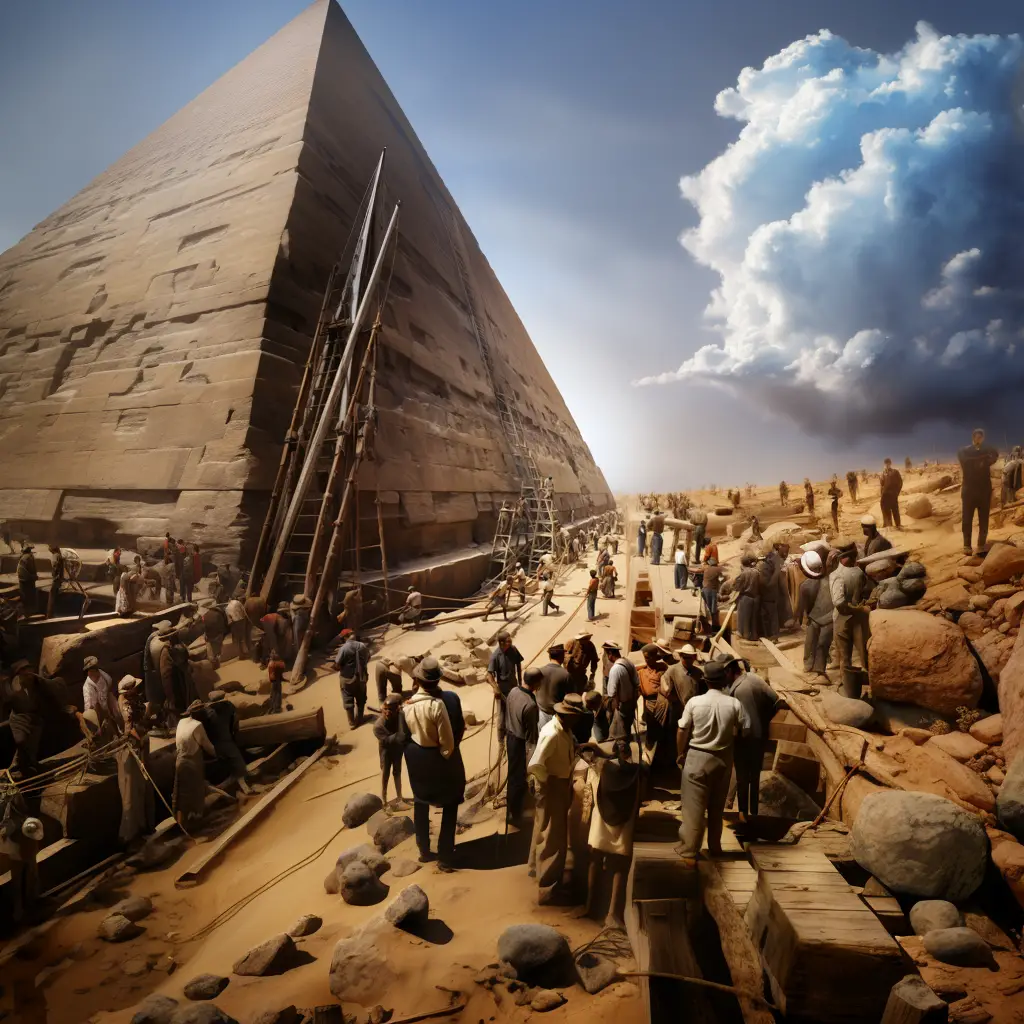The Great Pyramids of Giza, a symbol of ancient ingenuity and grandeur, have long been enshrouded in a veil of mystery. A prevailing myth, deeply rooted in historical accounts, suggests these monuments were built by a vast army of enslaved laborers. This narrative, largely attributed to Greek historian Herodotus, has dominated the collective imagination for centuries.
Herodotus and the Enduring Myth of Slave Labor
Herodotus, visiting Egypt in the 5th century BC, painted a picture of the pyramids’ construction in his seminal work “Histories.” He described tens of thousands of slaves toiling under oppressive conditions to erect these structures. This influential yet partial account has shaped our understanding for millennia.

The Historical Context and Archaeological Evidence
Contrary to Herodotus’s accounts, recent archaeological findings paint a different picture. The discovery of workers’ cemeteries near the pyramids provides crucial insights. These graves, far from being those of enslaved individuals, belonged to laborers who were respected and cared for in society.
Life of the Pyramid Builders
The tombs at Giza bear evidence of skilled laborers who received medical care and a nutritious diet. These were not the downtrodden and oppressed individuals of lore but respected workers, integral to the fabric of Egyptian society. Their burial close to the sacred pyramids further signifies their honored status.

The Nature of the Labor Force
The pyramid builders were skilled craftsmen, organized into specialized teams. These laborers, proficient in quarrying, masonry, and logistics, were likely drawn from various parts of Egypt. They worked seasonally, often during the Nile floods when agricultural work was impossible, indicating a structured and organized employment system.
Compensation and Care
While there are no direct records of wages, it’s believed that these workers were compensated with essentials like food, clothing, and shelter. The presence of medical facilities in the workers’ villages suggests they had access to healthcare, and their decent burials indicate funerary benefits – privileges not typically afforded to slaves.
Conclusion: Debunking the Slave Labor Myth
The narrative of the Great Pyramids being built by an oppressed slave army is a far cry from reality. The truth, emerging from the sands of Giza, tells a tale of skilled, respected, and adequately compensated laborers. This revelation not only corrects a historical inaccuracy but also sheds light on the remarkable organizational and engineering feats of ancient Egypt. The Great Pyramids of Giza stand not as monuments of oppression but as testaments to the skills and dedication of ancient Egyptian workers, who rightfully deserve recognition in the annals of history.






